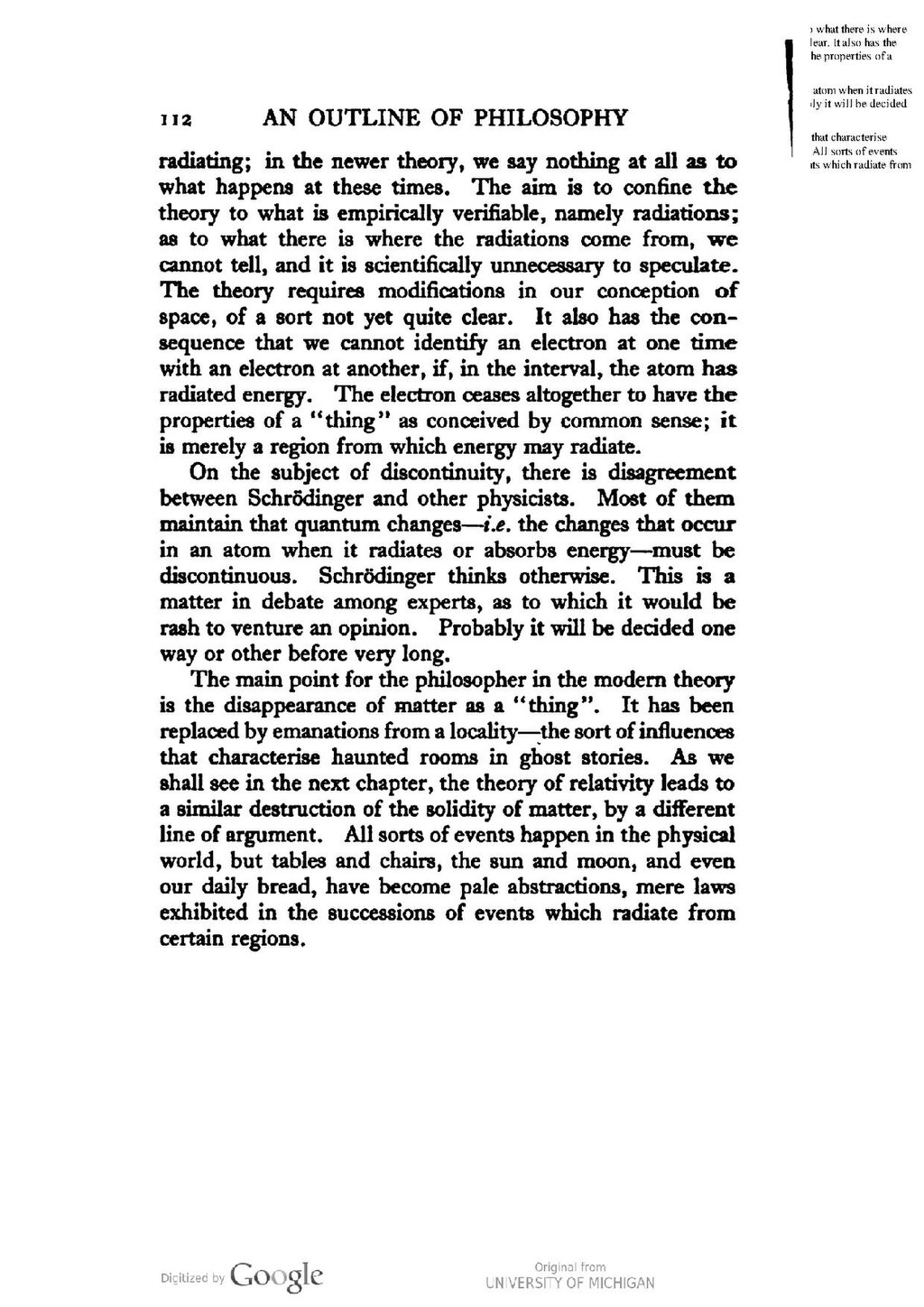radiating; in the newer theory, we say nothing at all as to what happens at these times. The aim is to confine the theory to what is empirically verifiable, namely radiations; as to what there is where the radiations come from, we cannot tell, and it is scientifically unnecessary to speculate. The theory requires modifications in our conception of space, of a sort not yet quite clear. It also has the consequence that we cannot identify an electron at one time with an electron at another, if, in the interval, the atom has radiated energy. The electron ceases altogether to have the properties of a "thing" as conceived by common sense; it is merely a region from which energy may radiate.
On the subject of discontinuity, there is disagreement between Schrödinger and other physicists. Most of them maintain that quantum changes—i.e. the changes that occur in an atom when it radiates or absorbs energy—must be discontinuous. Schrödinger thinks otherwise. This is a matter in debate among experts, as to which it would be rash to venture an opinion. Probably it will be decided one way or other before very long.
The main point for the philosopher in the modern theory is the disappearance of matter as a "thing". It has been replaced by emanations from a locality—the sort of influences that characterise haunted rooms in ghost stories. As we shall see in the next chapter, the theory of relativity leads to a similar destruction of the solidity of matter, by a different line of argument. All sorts of events happen in the physical world, but tables and chairs, the sun and moon, and even our daily bread, have become pale abstractions, mere laws exhibited in the successions of events which radiate from certain regions.
